
Who would have thought that what happens in a small market place in China could have such a massive impacton every county all over the world? Hitting every country and every economy equally, forcing people to stay at home to protect their health, families and their futures. Although according to recent reports from China the wet market initially assumed to be the center of infection has now been ruled out as the epicenter.
What does this mean to the average family? What can you do to make yourself safe? Do dust masks really work at all, or is it merely a psychological placebo, making us feel safer than we really are and leading us into a false sense of security?
We have tried to put as much information in one place details on personally combating the issues of Covid-19 gathered from the (WHO) World health organisation, Healthline.com, NHS direct, a few other sources and our own technical expertise regarding Personal protection equipment.
1 – Old t-shirt, handkerchief, dustmask or respirator? What is good enough to protect me?
Firstly, personal protection has been around a very long time. And there are many types of face covering, from a simple piece of cloth to a full isolated air system respirator. Maybe a better question is – What are dustmasks there to protect against? Dustmasks were developed predominantly to limit the amount of dust someone would breath into their lungs.

photos by Engin Akyurt and Obi (unsplash)
Firstly your mask must be rated for it to be protective! There are many ratings for dust masks; Essentially FFP1(also called P1), FFP2(also called P2), N95, N99 and FFP3(also called P3) are the most common, this certifies a mask’s protection factor (for example N95 is rated to protect against up to 95% of dust particles) These ratings are given to show how much dust can be in the atmosphere and still be used safely (FFP or P rating) or how much dust can be blocked and still protect the wearer (N ratings).
Dust particles floating in the air can be quite large compared with a liquid spray (a sneeze), or a gas (oxygen or nitrogen) and dust masks work by stopping only larger particles. There are 3 common dust mask ratings which are specifically graded regarding dust density and NOT for any other purpose. According to the World health organisation dust particles are from 1 to 100 µm (micros) is size whereas aerosols/liquid spray can be fractions of a micron (as stated in this piece from the US library of medicine.)
The UK government says – “if you can, wear something that covers your nose and mouth when it’s hard to stay away from people, such as on public transport..” and ” You are at higher risk of being directly exposed to respiratory droplets (released by talking or coughing) when you are within two metres of someone and have face-to-face contact with them. You can lower the risk of infection if you stay side-to-side rather than facing someone.”
So the bottom line is a dustmask will protect others if the wearer has Covid-19, but will do less to protect the wearer from getting it from others – Social distancing and washing your hands are much better preventions. Unless you buy a full face supplied air respirator a dustmask will provide little protection. Thin masks are no good at all, the thicker the barrier between you and the air the less likely you are to be infected.
US Library of medicine has some interesting information saying that masks are not “100% preventative, but are greater than 99% effective”. Bearing in mind these dust masks in their trial are graded N95. Also CEBM suggest more evidence and trials are needed to say that “face coverings” are significant in protecting people against Covid-19. Personally seeing these results was a surprise and changed my mind as to their effectiveness.
The US Library of medicine also say that a simple single or dual ply cloth mask is from only 60 – 80% effective, this effectiveness then degrades each time you wash it, degrading 20% after 4 washes to 40% – 30% effiency! Making these masks virtually useless compared to dust masks and respirators that are rated!

2 – A mask needs to be fitted properly to be effective!
So you’ve decided that you want to use a dustmask? Are you fitting or using it properly? For more in depth information the has done a study on just how effective a dust mask is…
1 – To work to the graded specifications the mask has to be covering nose and mouth completely. If your nose or mouth are exposed, you may as well be wearing no mask at all.
2 – Make sure the mask has a rating and/or is made of a thick material. – If it’s not rated your mask will fit into the 60% effective and lower category!
3 – The mask must be fitted without any gaps around the edges of the mask. These gaps will let contaminents and dust through.
4 – The mask must be tested, try to get fingers under the mask all around edges, if you can the mask will be ineffective.
5 – A use by date? On my dust mask? Yes, dust masks do have a use by date, this is not for the filters on the mask but for the life of the rubber straps.
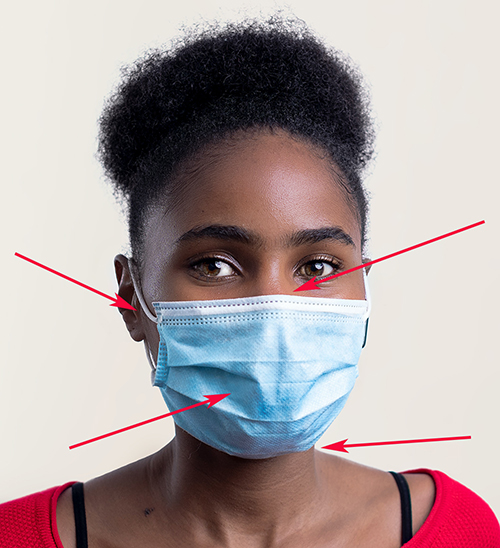
photo by Mustafa Omar
3 – What about my eyes?
Yes exposed eyes are still a way into your body for infection. Once again we look at the US library of medicine which says that you can be infected through the eye. This is why washing hands and not touching your face are essential to avoid infection.
So yes, eye protection will help toward stopping infection through the eye, it also prevents touching of the eye with fingers. You’re more likely to touch or rub your eye with your fingers than getting direct infection through the eye.
Obviously if someone sneezes or coughs in your face with Covid-19 having eye protection will help.
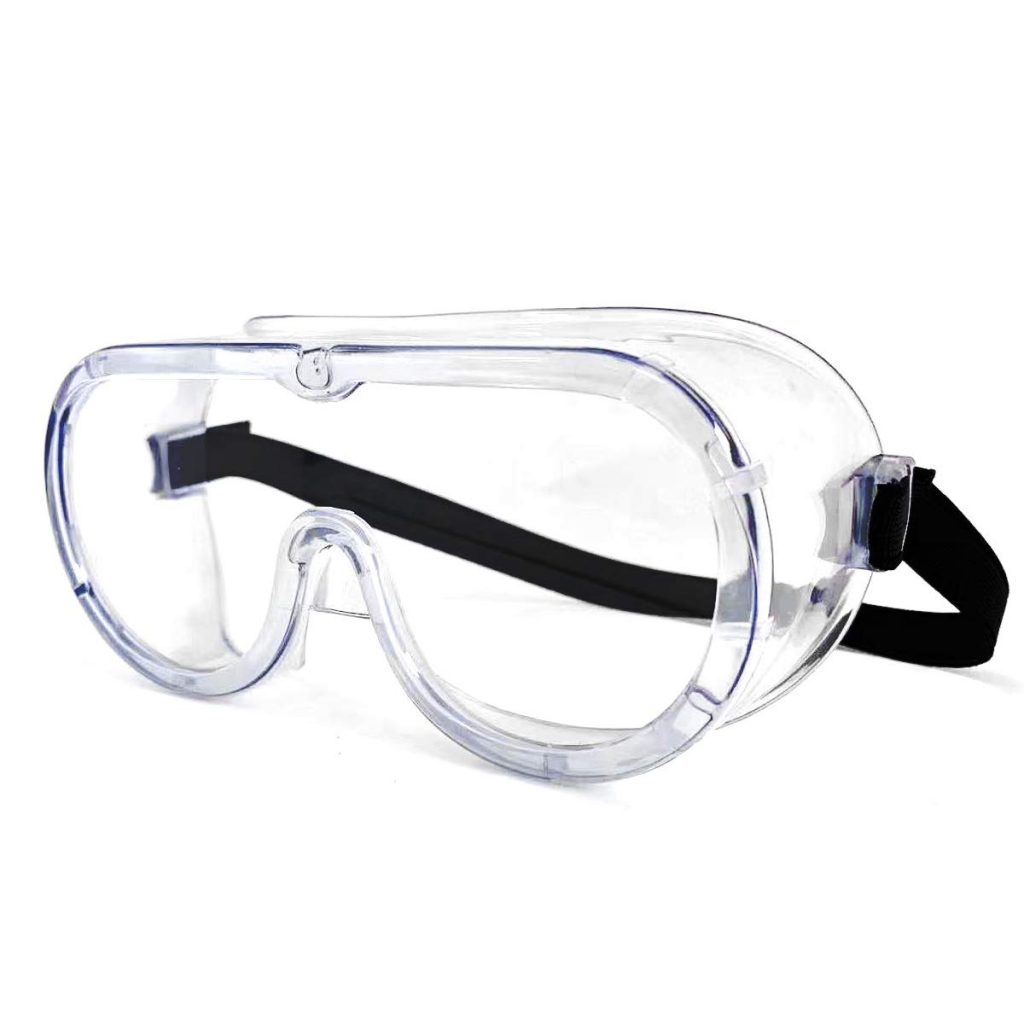
4 – gloves and hand protection
Hand protection is mainly used instead of having to wash your hands all the time. So use the gloves and dispose of them or wash the gloves before using them again.
However it is advised that hands are washed as well as wearing gloves, to be doubly safe.
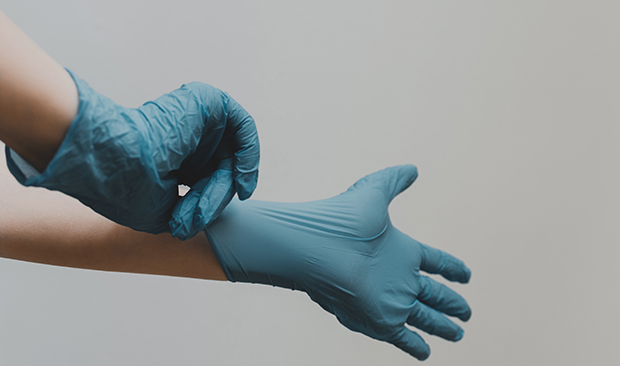
5 – Hygene and common sense
1 – The reasons for washing hands and cleaning surfaces
How can you tell what surfaces are contaminated with Covid-19? The simple answer is, you can’t. There have been studies on Covid-19’s life expency on every day items; metals, plastics, wood as well as skin or hair. So it’s better to be safe, than sorry.
According to the Lancet the virus is stable at 4 °C up to room temperature (24 °C) and can stay active on plastic and Stainless steel for up to 7 days! Can last on Glass, copper, paper and banknotes for up to 4 days. Cardboard for 24 hours and wood up to 48 hours! So cleaning surfaces, especially in unfamilar locations (when you don’t know who has been using door handles or surfaces before you) is essential to protect yourself and your family.
The best protection is of course washing your hands with soap and water to kill any virus on them. This works by the soap molecules sticking to the virus’ “lipid bilayer” and then letting the water wash it away and kill it. Science focus go into greater detail about how this happens on their website.

2 – The reasons for Social distancing.
With many diseases, including Covid-19, people are affected by them in different ways. Some people may be hit hard and die when infected, whereas others don’t display any symptoms at all. (Both Presymtomatic and Asymtomatic). So asymtomatic infected, don’t know and don’t think they have it therefore go out into public spreading the desease to others. Just because you don’t feel ill, doesn’t mean you aren’t infectious.
The CEBM reported on this in April. Saying “from 5% to 80% of people infected with covid-19 could be asymtomatic (showing no symptoms of a disease that they have)! Even taking an average of this percentage means 50% of people who are infected with Covid-19 may have mild or no symptoms at all but will be infectious.
Therefore the only reason we can ensure the safety of the vulnerable is to socially distance. Someone who is asymtomatic could be 2 meters (6 foot 6 inches) away safely from someone who has not got the virus. Why 2 meters you ask? Because when people talk they spray out aerosole/water vapour up to two meters.
However, when it comes to people who have the virus either asymptomatic or otherwise when they cough or sneeze, this safe distance increases significantly. As we can see from this post by Science focus an uncovered cough can spread infected droplets up to six meters, or a sneeze up to eight meters! (the length of a London Bus)
So the idea is prevention; having minimal contact means the virus has less or no chance to spread from person to person. If someone is at home the infection can’t be spread to or from that person. In 1918 they used exactly the same method to eradicate the influenza epidemic. These documented cases from National Geographic from the US help prove the point that it works very well when implemented properly.
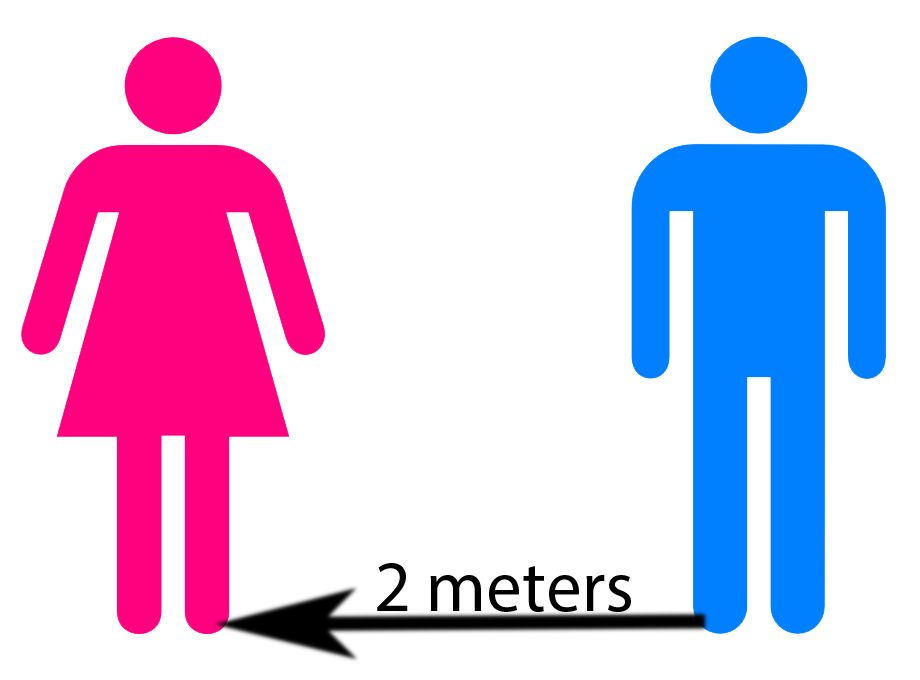
Graphics from UK Government website
3 – Contact tracing
This only becomes relevant if you test positive to covid-19 or have been in close proximity to someone who has tested positive. Then you are tracked by the authorities and told to self isolate for 14 days even if you don’t have symtoms. This is the method South Korea has used to stop the epidemic effectively with less than 300 deaths in total.

4 – Trying not to touch your face
Most people don’t even notice when they touch their faces; that little itch, some sweat maybe, or adjusting your glasses. But your hands are a breeding ground for covid-19; touching money, hand-rails, desks, door handles, bells, self service check-out screens and many many other possible contaminated surfaces or objects. As we’ve seen some surfaces can have Covid-19 on them for up to 7 days in the right conditions. If you do touch your face, use a wrist or part of your hand you wouldn’t usually use, meaning it is less likely to infect yourself from contaminated objects by your own hand.
Do not touch your face if you’re wearing gloves! Yes, gloves are protecting you, but only from getting covid-19 on your hands. If you touch an infected surface with the glove, then touch your face with the glove, you will have the same risk as not wearing gloves at all.
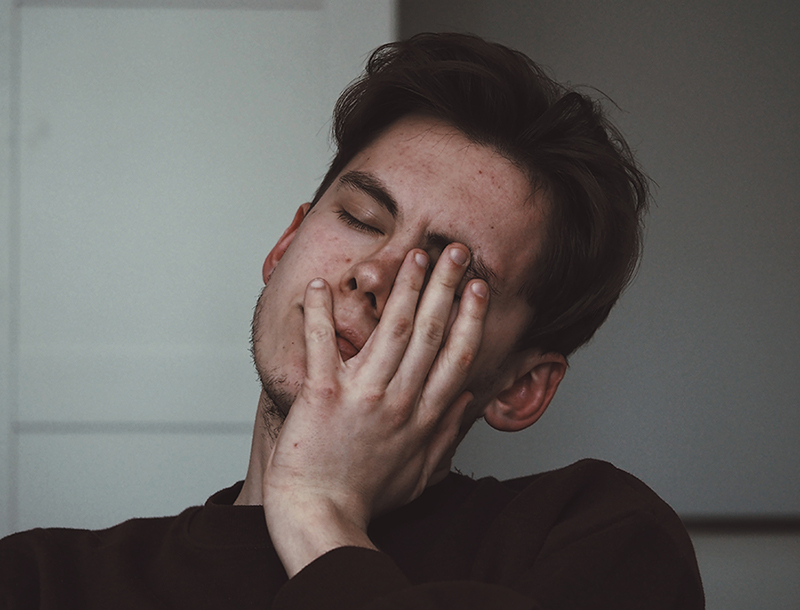
Photo by Adrian Swancar
5 – Cover your mouth when you cough or sneeze
As mentioned earlier a cough can travel up to six meters, and a sneeze eight meters. The spray can then hang in the air if for up to 30 minutes (inside, with no airflow) which can then infect anyone passing through this vapour.
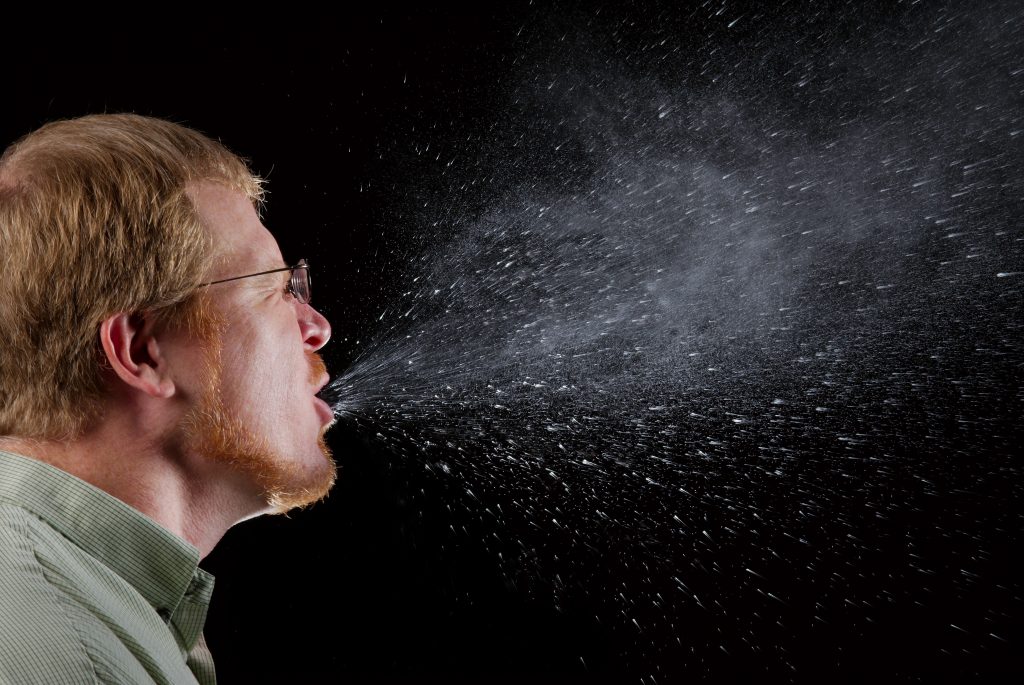
6 -Dispelling the myths.
There seems to be lots of propaganda from people claiming the covid-19 pandemic is a “lie” or “disinformation”. Or that the Chinese created the virus in a lab or 5G is somehow responsible from spreading Covid-19. Over 1million people dead so far should prove these statements false. But, let’s ask the questions that need to be addressed…
1 – Is Covid-19 naturally occuring? – Why would anyone release a virus into their own population? They wouldn’t. They would send it to a different country and the survivors would never find out where it came from.
2 – Is this a real disaster or a complex manipulation? – Why would a country (let’s take the UK) shut everything down, loosing billions of pounds a day – in April the mail online reported £2.4 billion is being lost a day in the UK. Lockdown started on March 23rd and it’s now June so this is a total of almost £250 billion so far. Does it make sense to close a whole country on a whim, for the first time like this in over 100 years? Definitely not.
If either of these scenarios were true, it be the most expensive and stupid decision ever made by any country in the world ever, and every country has now implemented similar restrictions. It’s extremely difficult to gauge any possible advantage in shutting the worlds economies down for 3 months. Thinking logically, the suggestion is ludicrous!
3 – If it is natural and not a manipulation then why did it all happen now? – Because nature is chaotic and unpredictable. Everything is evolving. Your parents made you, and their parents made them, you have evolved in ways different to your parents and grandparents. When something lives it evolves, this virus is a colony of living organisms, therefore is also evolving. The virus jumped (much like bird-flu, swine-flu or ebola) from animals to humans. This virus could have evolved at anytime.
4 – Is the virus spread by 5G? This is totally impossible! It’s like asking if someone can get “herpes from watching their TV set”, or comparing apples to an architect’s blueprints. The 5G signal is a wireless frequency system, which beams information to and from devices. Virtual identical to 4G, 3G and so on with the exception of being faster and doesn’t have a physical existance.
5 – How about putting disinfectant or bleach into my body to kill Covid-19? It works on work surfaces! This is a dangerous and stupid suggestion. Ingest or inject either bleach or disinfectant can be extremely harmful, causing organ failure and in some cases death – This statement has been issued by the leading makers of disinfectants.
6 – Antibiotics will kill this virus dead! This is untrue, unfortunately antibiotics will do nothing. Antibiotics aren’t used against viruses, they are used to kill bacterial infections. For information on the myths about Covid19, visit this site.
7 – Can I get Covid-19 from my cat or dog? There is no evidence that animals have spread this disease at all, compared to lots of evidence saying humans have spread it across the globe. Getting covid from your cat is extremely unlikely. As far as we know the only case of Covid-19 that has been confirmed outside the human population was in the lion and tiger population at New York zoo – All of the animals made a full recovery. So potentially humans can spread it to other animals, but not animals to humans.
Hopefully we’ve helped dispell some myths and give more you more information on how to stay safe inside and outside our homes during the Covid-19 pandemic. We are all in this together, so please look after eachother and show some compassion and tolerance.
